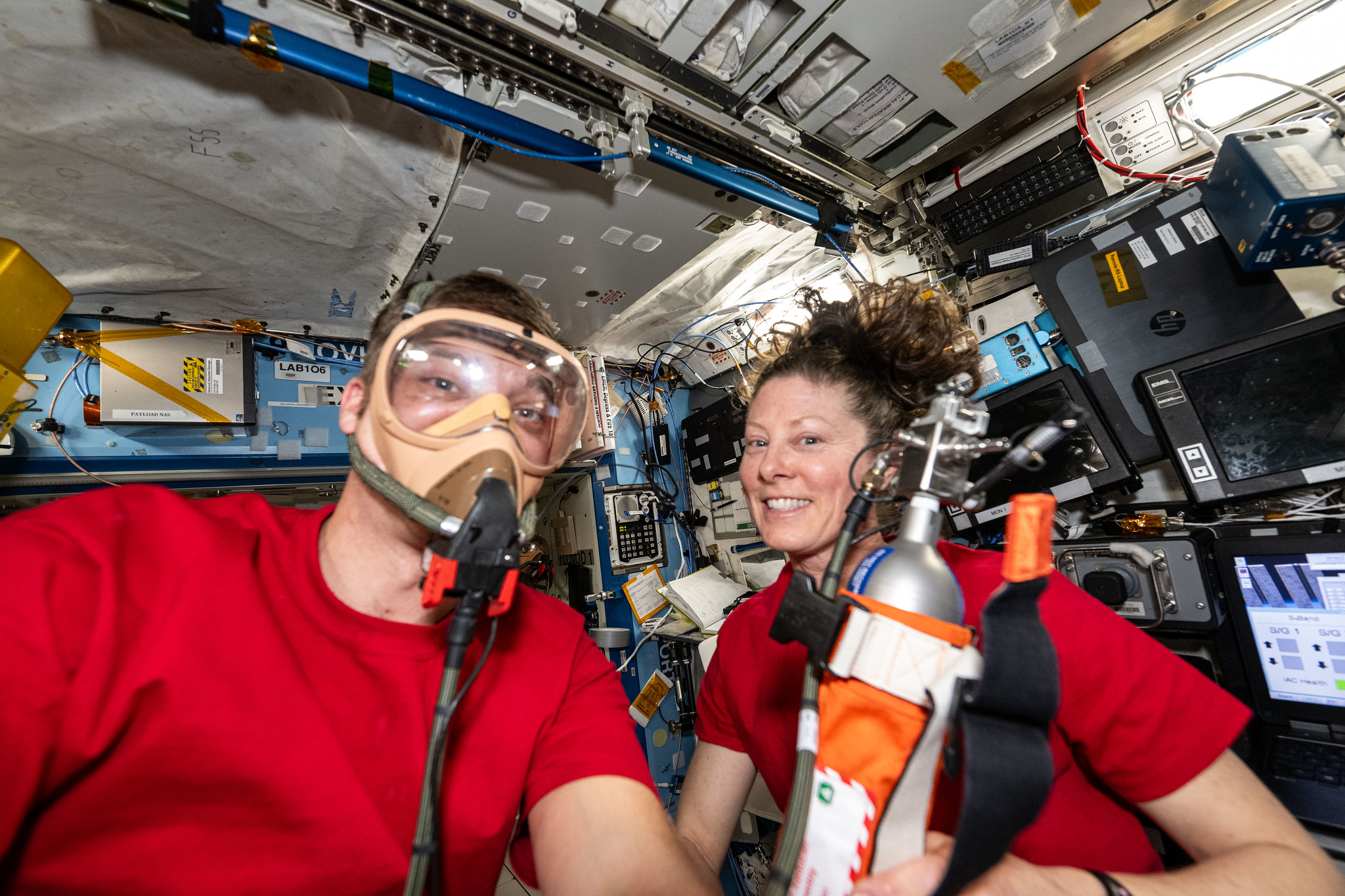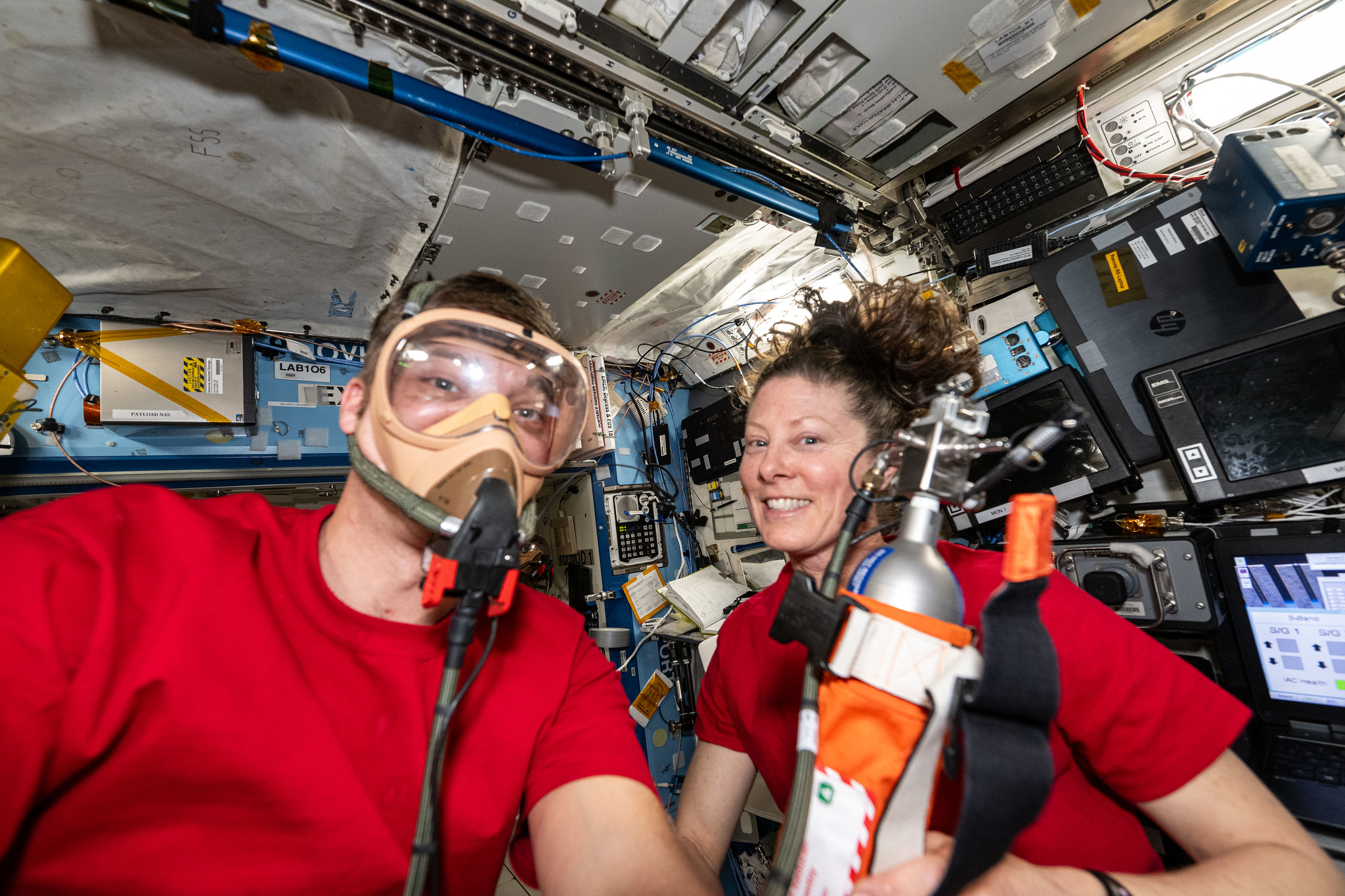 Expedition 71 Flight Engineers Matthew Dominick and Tracy C. Dyson, both NASA astronauts, pose for a fun portrait as Dominick tests portable breathing gear aboard the International Space Station’s Destiny laboratory module. (Credit: NASA) Students from Topeka, Kansas, will have the opportunity Wednesday, Aug. 21, to have NASA astronauts Matthew Dominick and Tracy C. Dyson answer their prerecorded questions aboard the International Space Station.
Expedition 71 Flight Engineers Matthew Dominick and Tracy C. Dyson, both NASA astronauts, pose for a fun portrait as Dominick tests portable breathing gear aboard the International Space Station’s Destiny laboratory module. (Credit: NASA) Students from Topeka, Kansas, will have the opportunity Wednesday, Aug. 21, to have NASA astronauts Matthew Dominick and Tracy C. Dyson answer their prerecorded questions aboard the International Space Station.
The 20-minute space-to-Earth call with students from Mose J. Whitson Elementary, Most Pure Heart Catholic School, and Aviation Explorers Post 8, will stream live at 10:30 a.m. EDT Aug. 21, on NASA+, NASA Television, the NASA app, and the agency’s website. Learn how to stream NASA TV through various platforms, including social media.
Media interested in covering the event must RSVP no later than 5 p.m. on Monday, Aug. 19, by contacting Aaron Gray at agray@tps501.org or 785-295-2900.
In preparation for the event, students from Whitson Elementary joined high school members of Aviation Explorers Post 8 for a local airport control tower tour and a pre-flight inspection demonstration. The Lawrence Amateur Astronomy Club, University of Kansas graduate students, and other astronomy enthusiasts provided presentations for the Whitson Starry Night Astronomy Title I family night. On the day of the event more than five schools from across the community will tune in.
For more than 23 years, astronauts have continuously lived and worked aboard the space station, testing technologies, performing science, and developing skills needed to explore farther from Earth. Astronauts aboard the orbiting laboratory communicate with NASA’s Mission Control Center in Houston 24 hours a day through SCaN (Space Communications and Navigation) Near Space Network.
Important research and technology investigations taking place aboard the International Space Station benefit people on Earth and lays the groundwork for other agency missions. As part of NASA’s Artemis campaign, the agency will send astronauts to the Moon to prepare for future human exploration of Mars; inspiring Artemis Generation explorers and ensuring the United States will continue to lead in space exploration and discovery.
See videos and lesson plans highlighting space station research at:
https://www.nasa.gov/stemonstation
-end-
Abbey Donaldson / Gerelle Dodson
Headquarters, Washington
202-358-1600
Abbey.a.donaldson@nasa.gov / gerelle.q.dodson@nasa.gov
Sandra Jones
Johnson Space Center, Houston
281-483-5111
sandra.p.jones@nasa.gov


